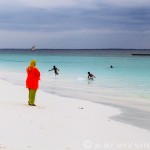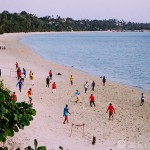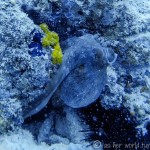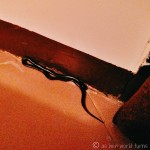I’m weirdly excited to share this post with you — the Spice Tour in Zanzibar is actually my favorite activity on the whole island. Who would have thought spices could be so engaging? But check out this array of plants and fruit we sample during our two-hour tour:
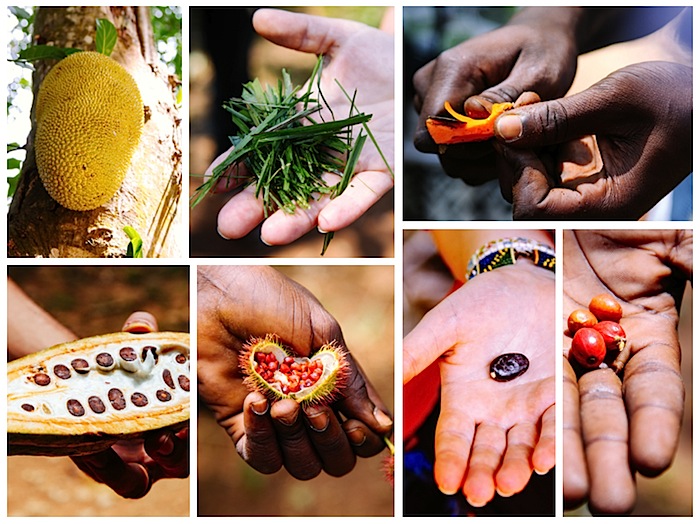
It’s an interactive experience with our small group. The guide has us smell, touch, and often taste each plant we come across.
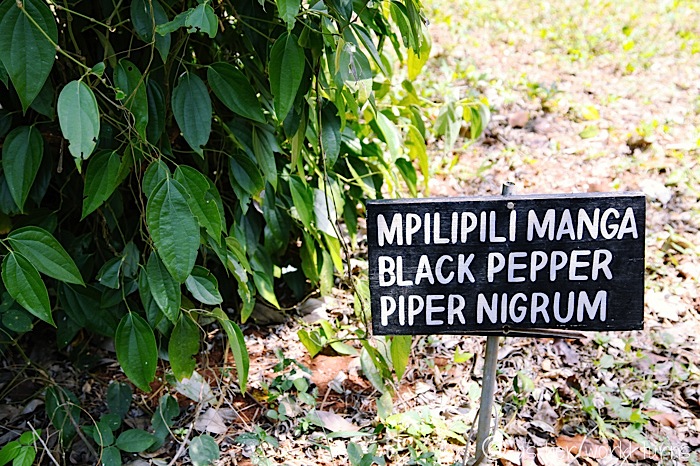
We begin in the pepper area. Our guide crumples up some leaves and has us smell them… sure enough, one whiff and some people sneeze.
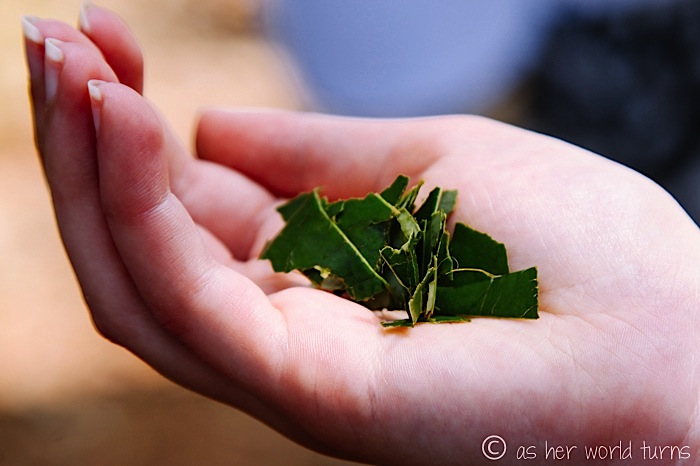
Our guide literally scales a tree — not for the last time of the tour — to find us a pepper specimen.
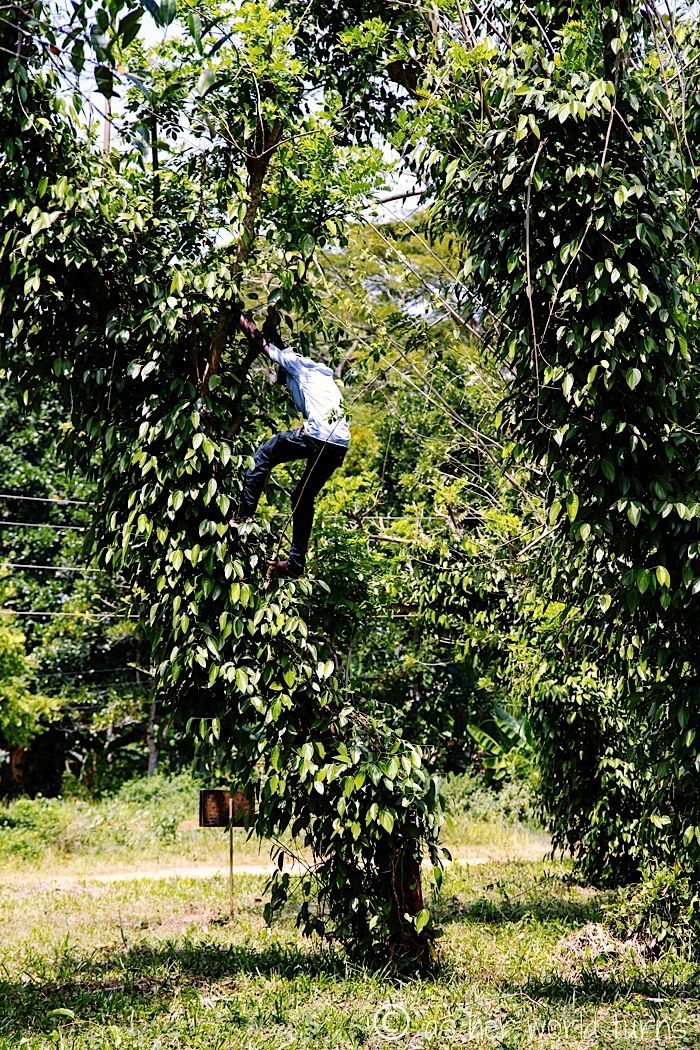
Here’s what green peppercorns look like right off the branch:
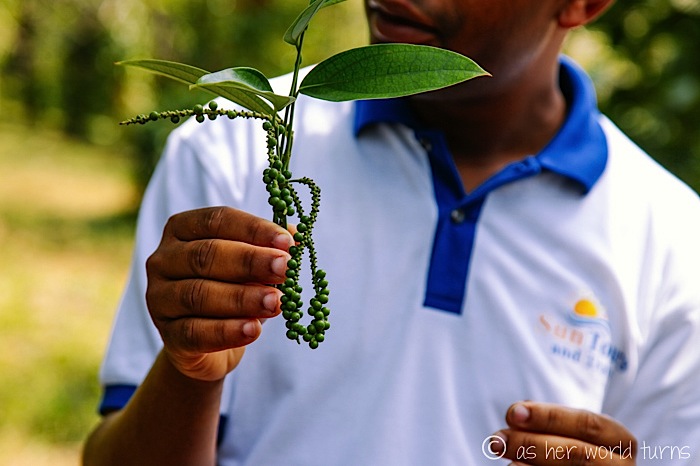

Next our guide pulls out a patch of grass and we do a smell test. I guess immediately — it’s lemongrass.
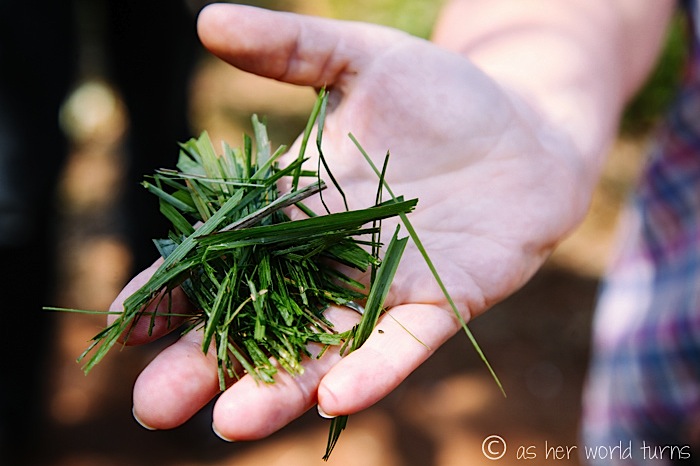

Did you know turmeric is a root spice, like ginger? Our guide reaches down to pull one out of the ground by its stalk. (FYI, this spice is extremely healthy; I love to add it to chili.)
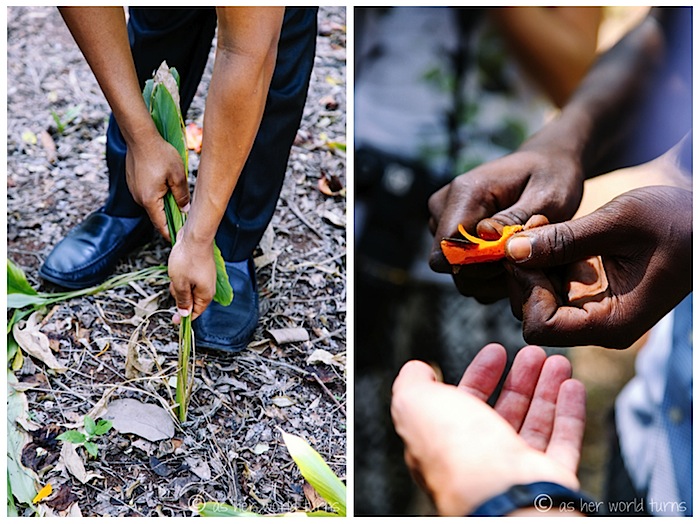
Next to the turmeric, we spot ginger. How fitting that these root plants can grow side-by-side. In both cases our guide has us do a taste test to guess what the spice is before we look at signage.
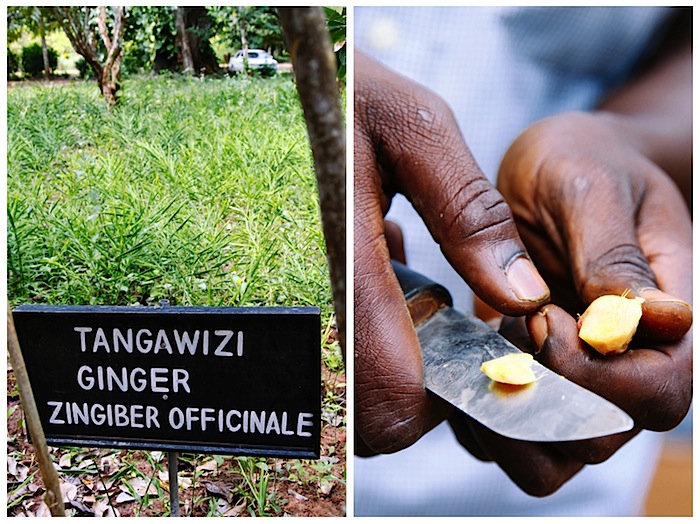
Peppers… better known as capsicum in many other countries outside the States (I learned this while spending time in Australia and New Zealand last year).
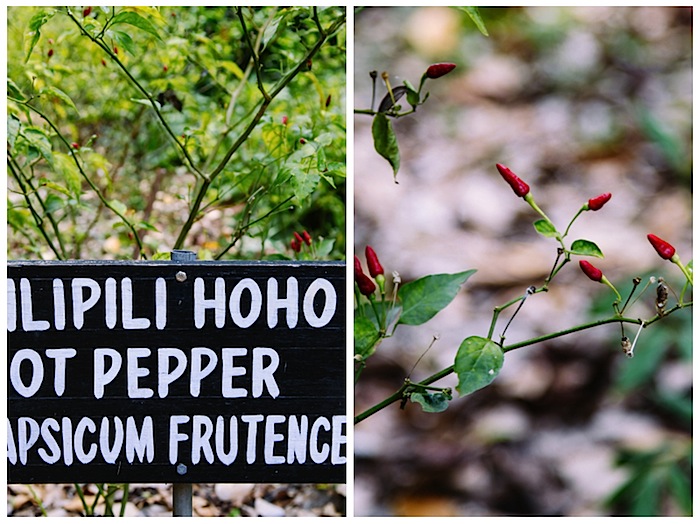
Hallelujah, it’s coffee beans! Now if only they served lattes at this very spot to complete the caffeine circle. Our guide pulls some off the branch and then peels away the outer layer to reveal the coffee bean inside (the bean is pale-colored in its natural state). I eat one; it’s not very good.
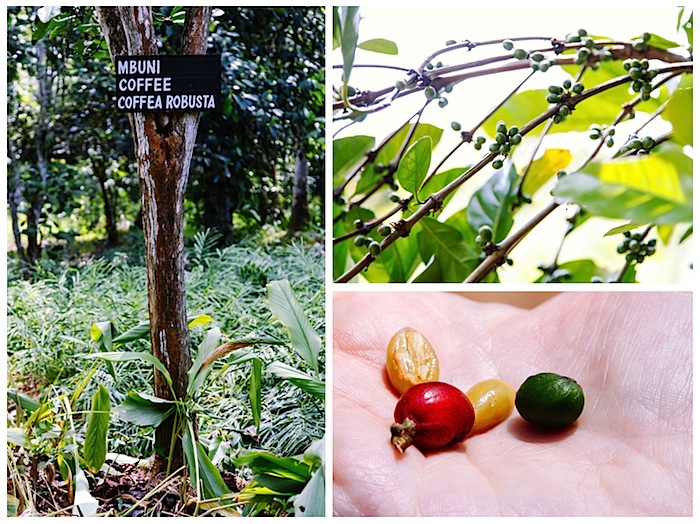
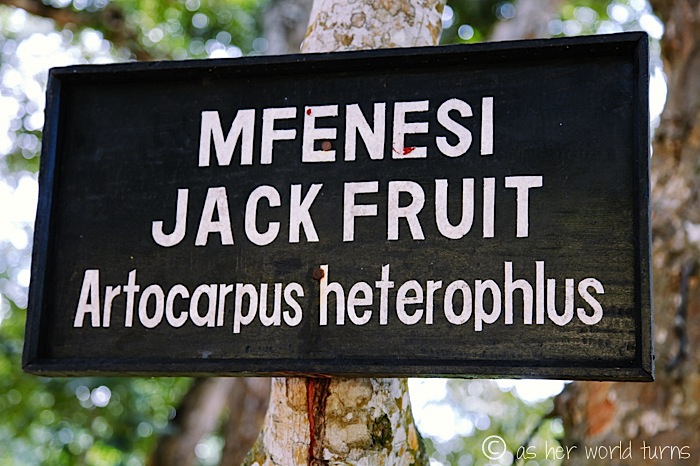
These jackfruits are enormous — in fact, there are signs warning visitors to watch out because one could fall off and knock out an unsuspecting tourist at any moment.
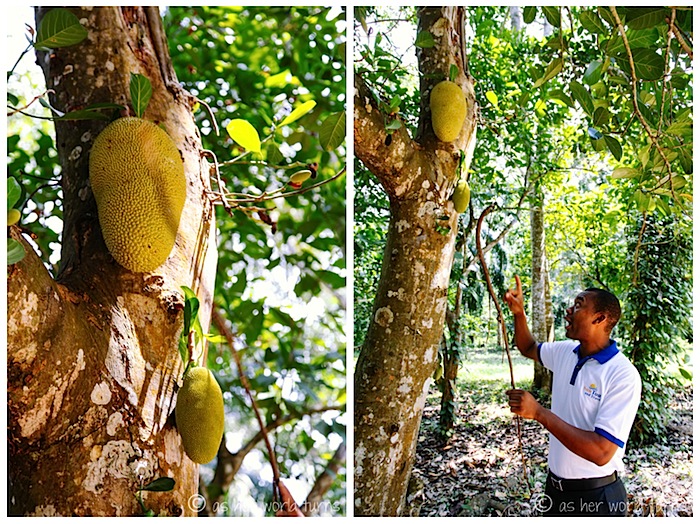
The neighboring tree grows durians… better known as the grossest smelling fruit in the world. Seriously! They are banned in many restaurants, on airlines, etc. and it’s difficult to find them in the States (when you do they’re typically frozen because of the smell). They are similar to the jackfruit in appearance but the outside shell is spikier.
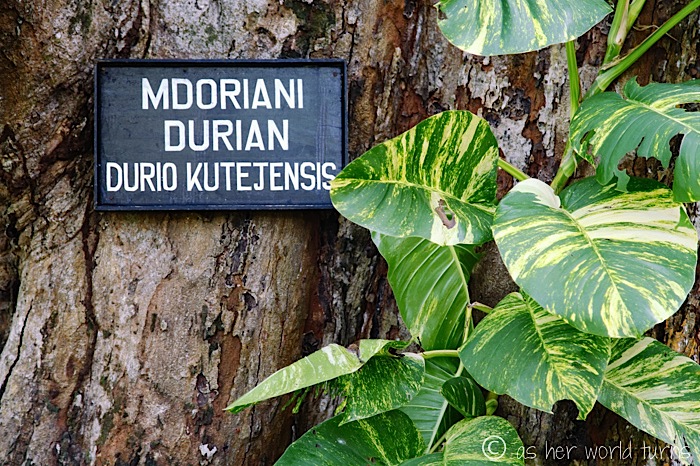

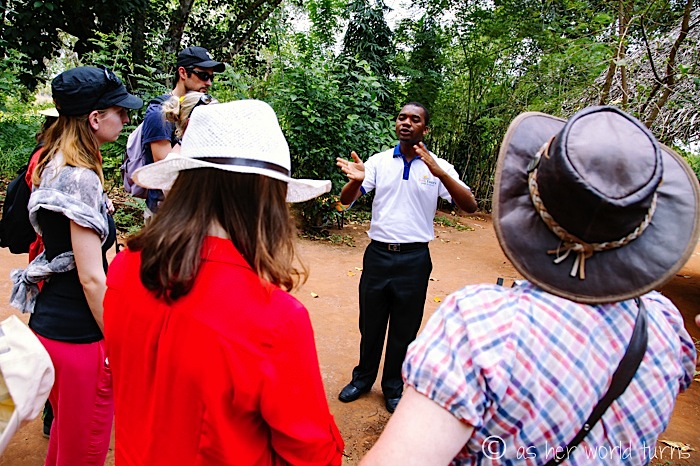
This next plant is a henna tree which, our guide informs us, is rumored to take care of unwanted pregnancies. (And urinary stones, apparently.)
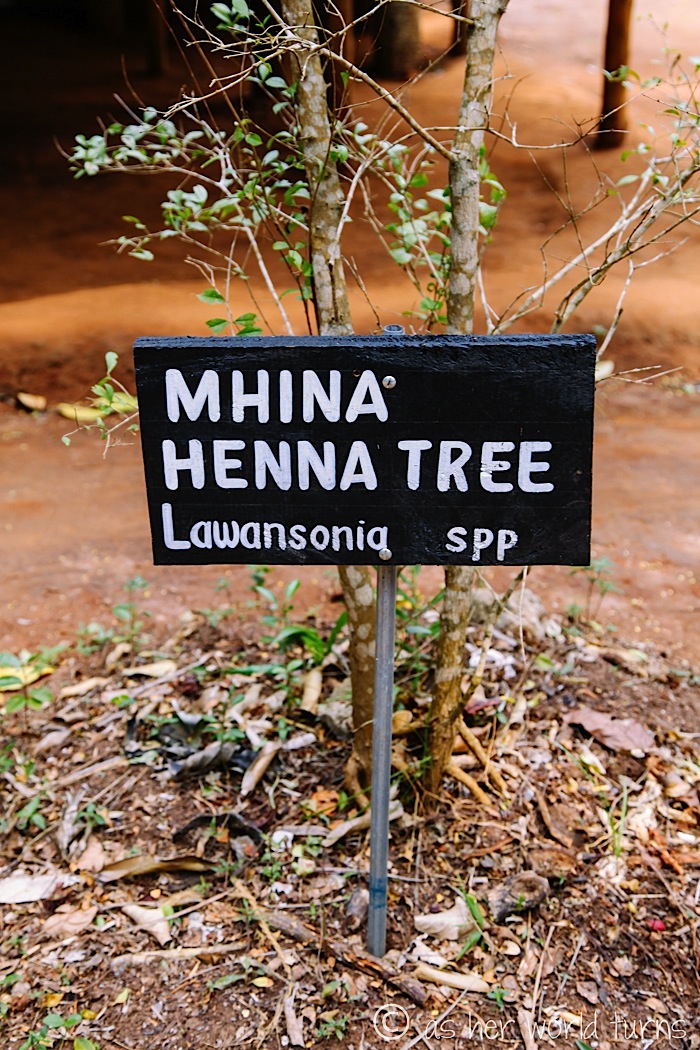
And we spot vanilla growing on trees! The actual flowers must be hand-pollinated and are quite time-consuming to grow.
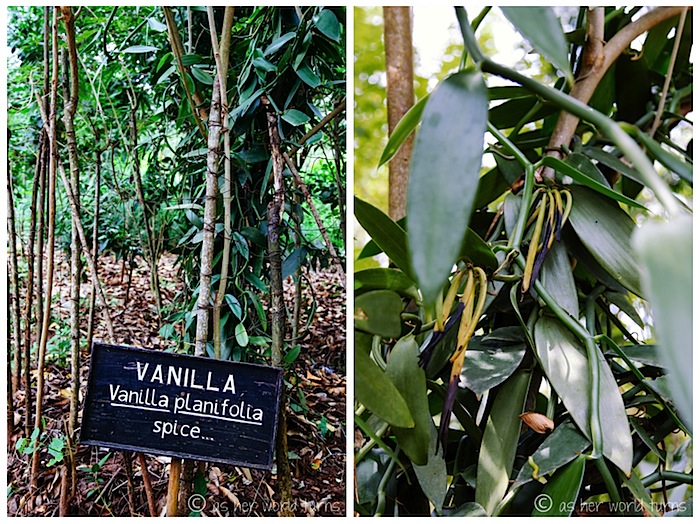
Confession: I have no idea what kind of flower appears in the photo below, but it’s quite pretty.
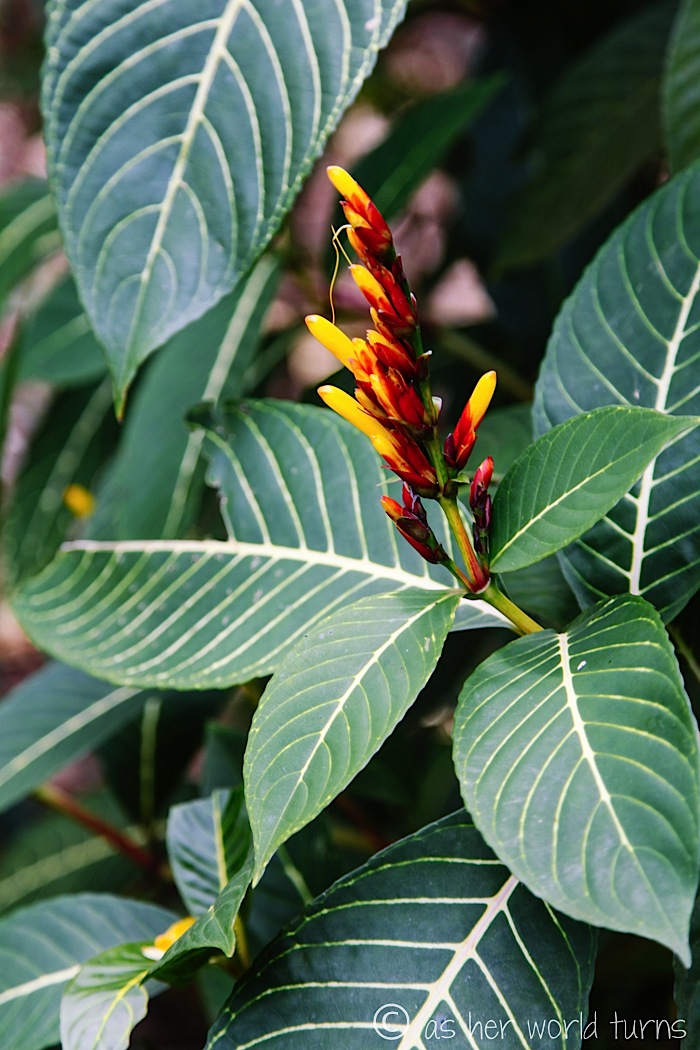

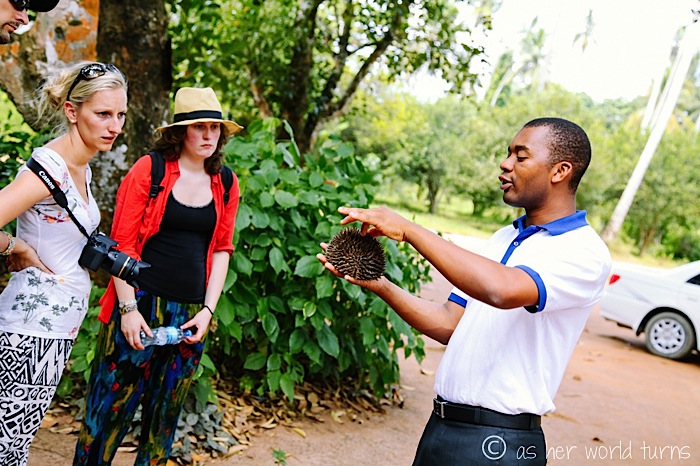
I can’t recall what kind of seeds or pods grow inside this pinecone-on-steriods, but what a beautiful outer casing. Nature is spectacular.
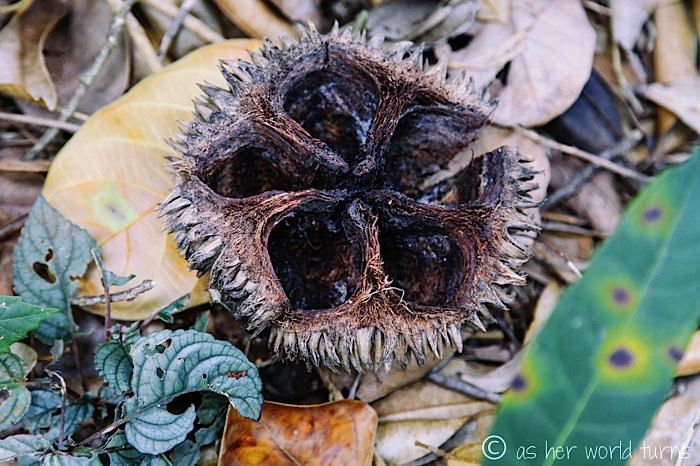
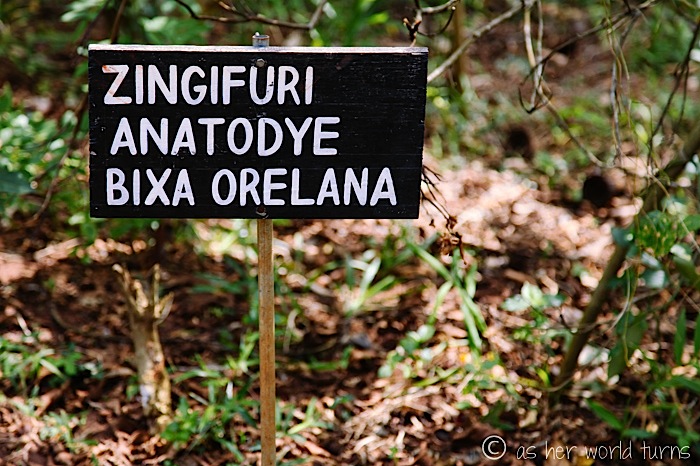
Oooh, this might be my favorite nature discovery of the day…
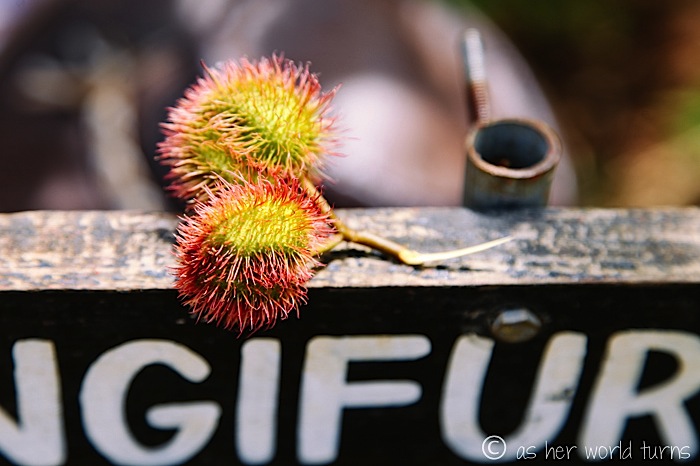
These plants — bixa orellana — bear pods that contain seeds of red pigment. A natural lipstick of sorts.
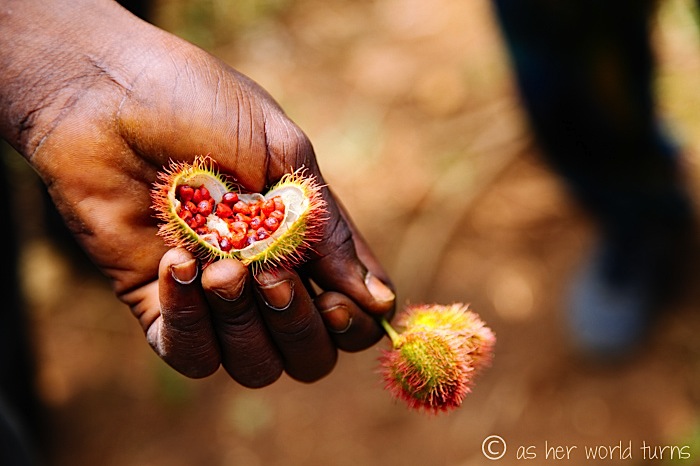
Fun times with nature’s paint!
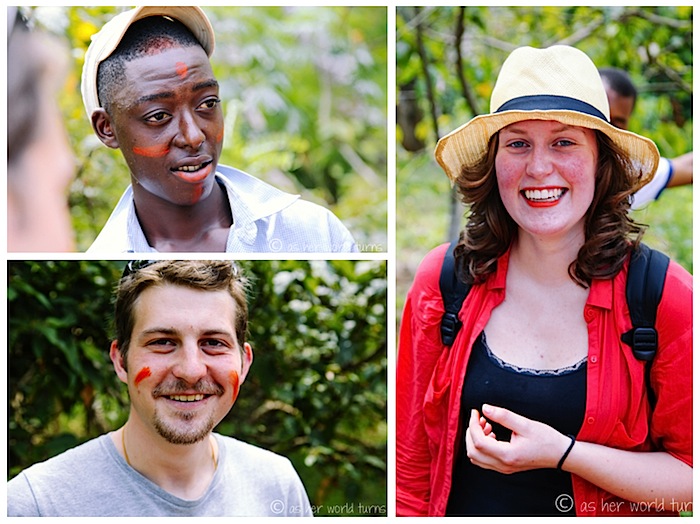
Next our guide shows us this plant below and asks us to guess what it is. He says it’s something we eat every day.
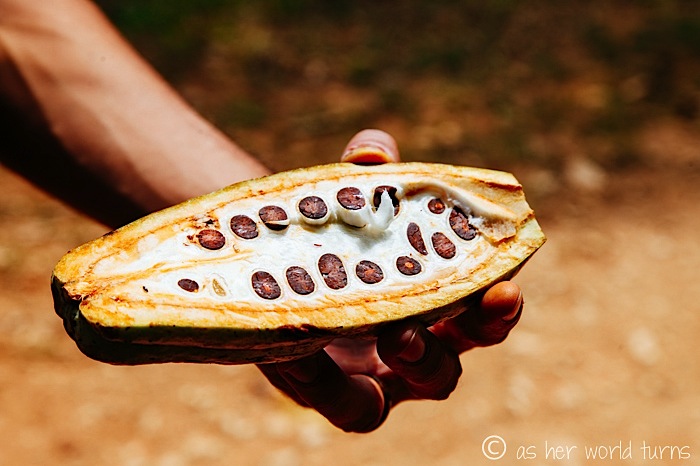
I’m totally stumped… which is silly, because later I recall that I’ve seen this before on a Boston Chocolate Tour. That right — it’s a cocoa pod, from which cocoa beans are harvested for chocolate.
A guide climbs right up the tree to pull down a fresh pod, which is shiny and green on the outside.
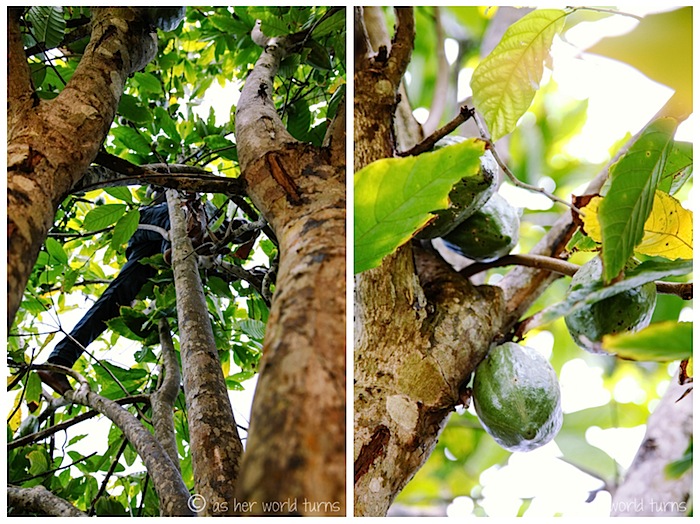
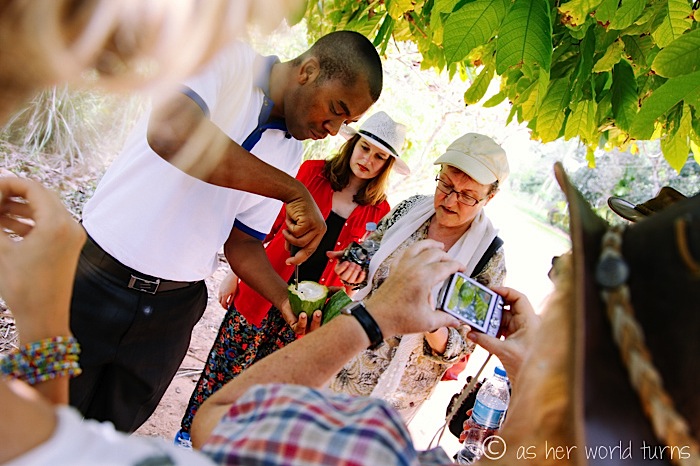
He cuts away the fiber surrounding the cocoa beans.
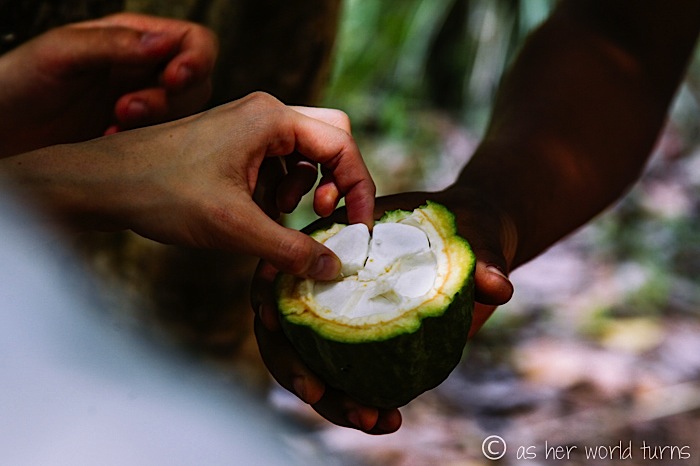

And there they are — cocoa beans found in their natural state, the source of chocolate. I know my chocoholic friend Victoria (tour guide extraordinaire at Boston Chocolate Tours) would enjoy this.
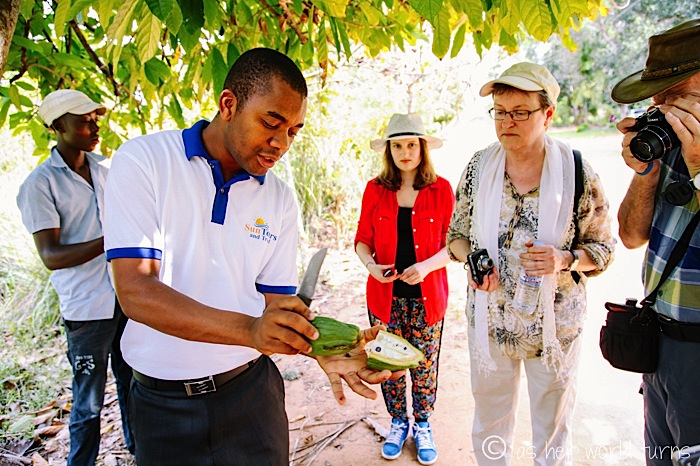
The next step in the process of manufacturing chocolate is to dry out these beans and then roast them. About half of the inside of the bean is cocoa butter, a primary ingredient in chocolate.

This next one is fascinating — when did I become such a plant nerd? — as our guide peels a layer of bark off this tree and asks us to guess what it is. Again, he says it’s something we eat all the time in our diet. I’m clueless.
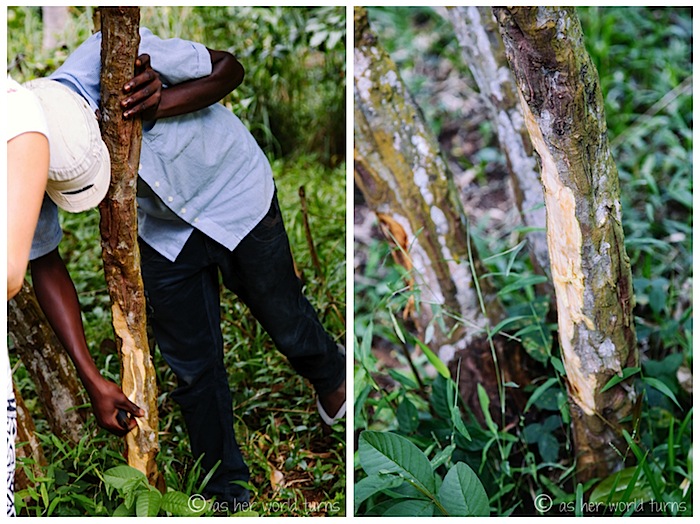
We take a whiff… and whoa, I was not expecting cinnamon! Who knew that cinnamon can be scraped off the bark of a tree?
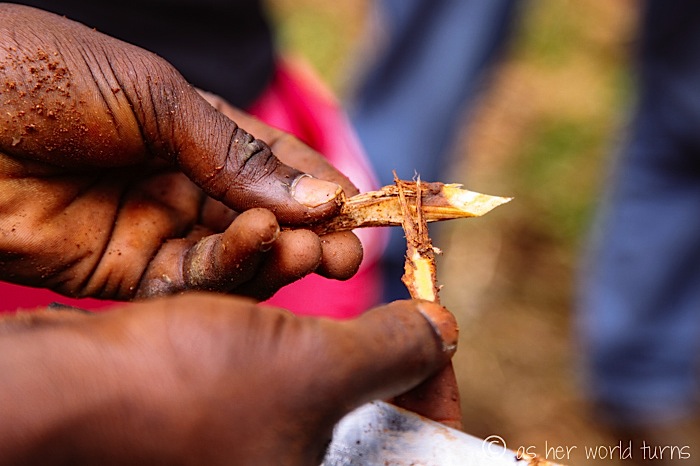
By the way, we don’t see nutmeg on this particular tour (perhaps it’s not in season or maybe we just skipped it) but here is what nutmeg looks like in nature:
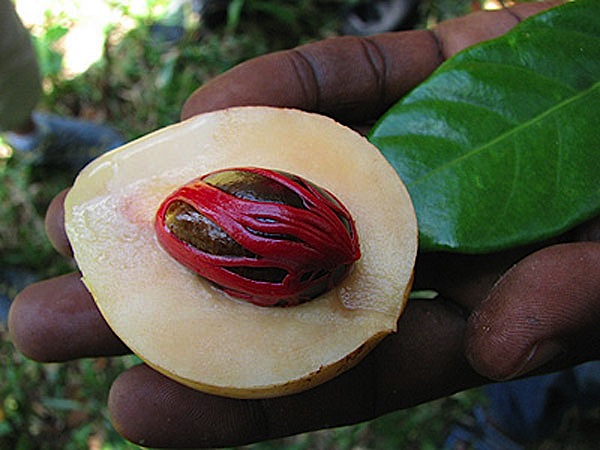
[image via]
Next up is a highlight of the tour — the Butterfly man. He’s known for climbing all the way up palm trees using only his hands and a piece of rope tied around his feet. And he sings the whole way up!
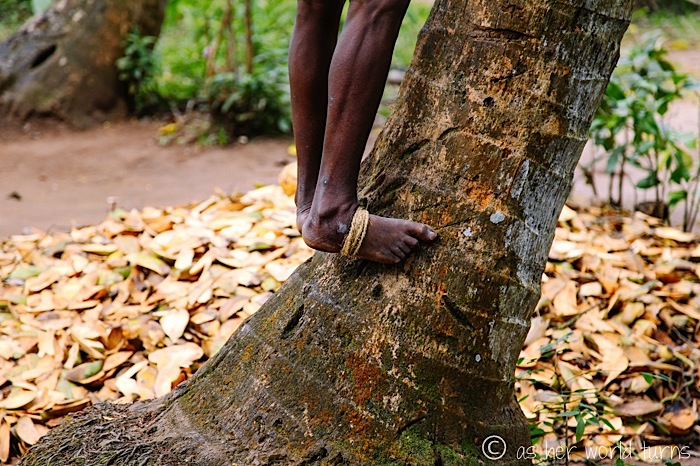
Here he goes…
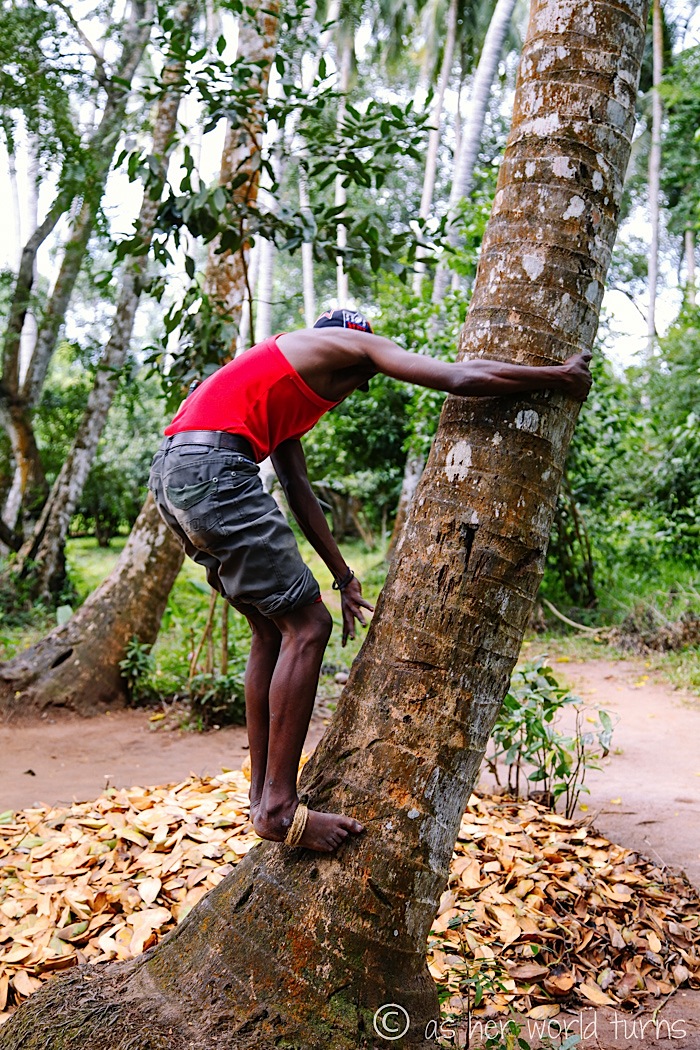
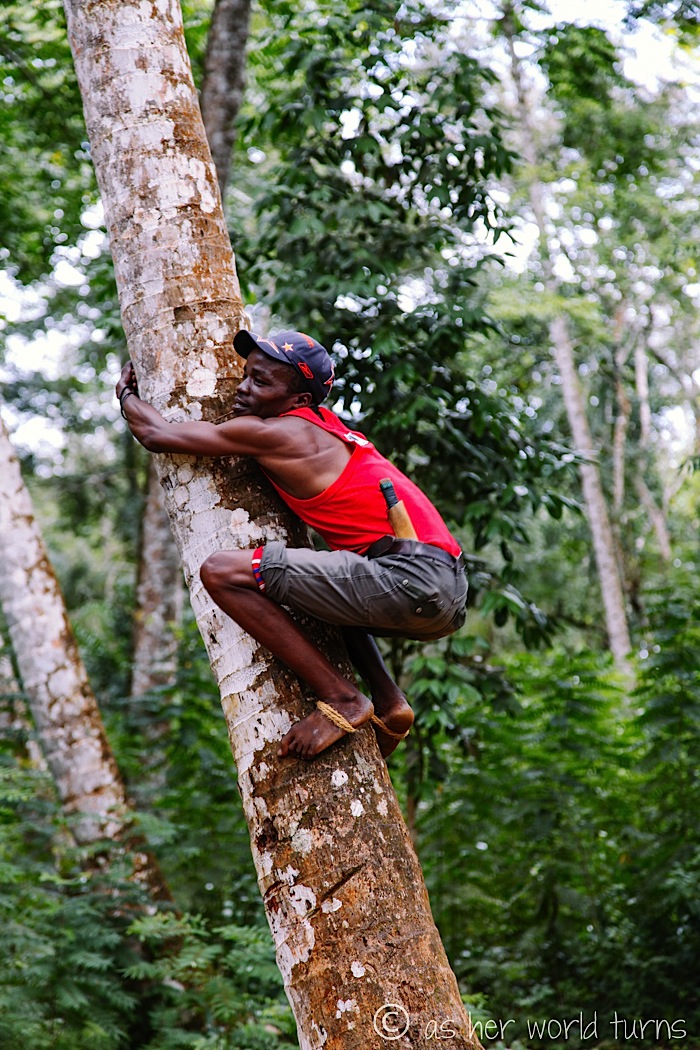
Perhaps a GIF would better demonstrate the action:
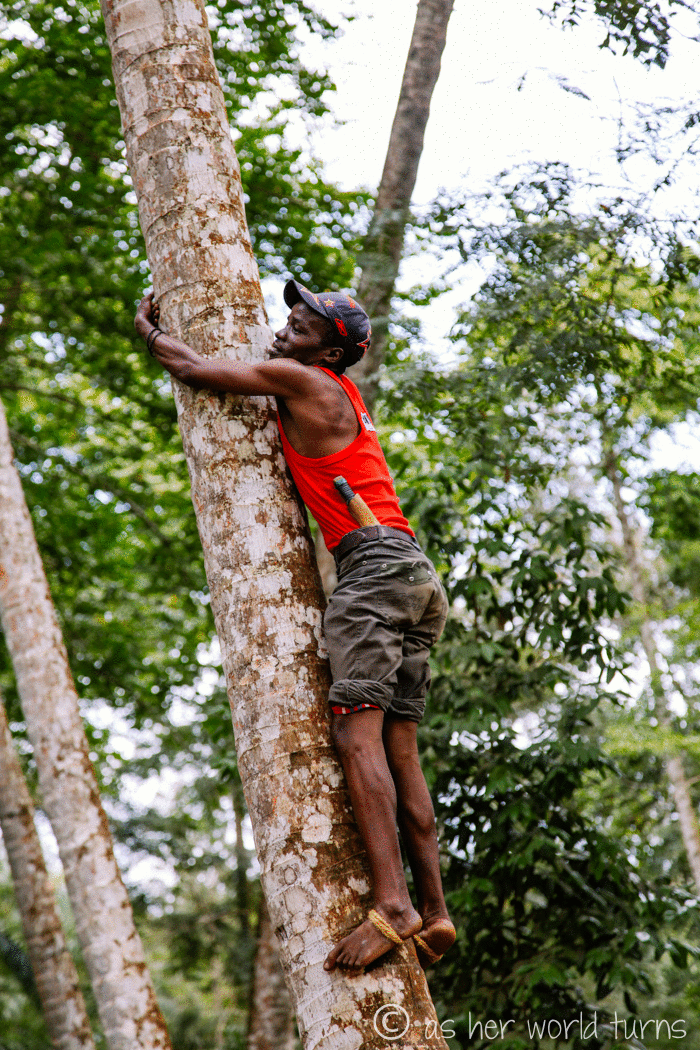 Now he’s just showing off:
Now he’s just showing off:
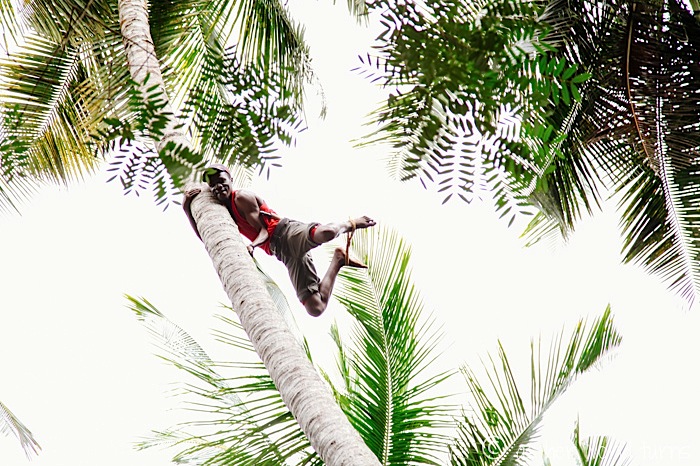
He climbs up so high, without any form of a safety net. (This isn’t even as far as he goes — he gets to the very top.)

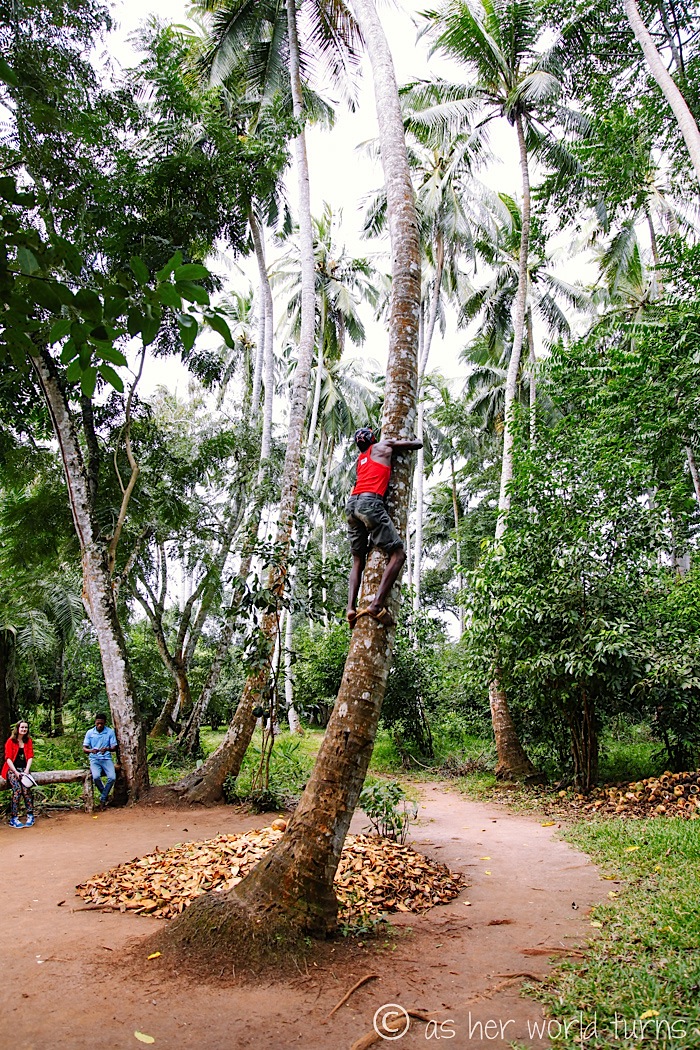
One more GIF as he makes his way back down:
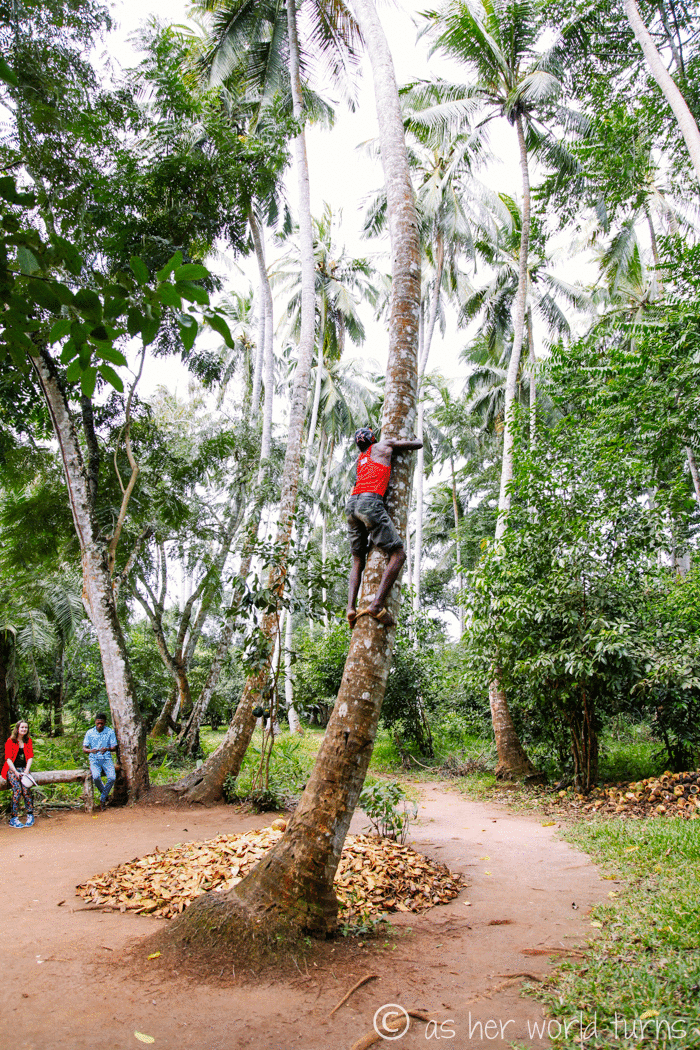 At the last minute I think to record a quick video on my iPhone. It’s not great (and embarrassingly I align the camera vertically because of the orientation of the tall palm tree, a rookie mistake) but here’s 20 seconds of Mr. Butterfly:
At the last minute I think to record a quick video on my iPhone. It’s not great (and embarrassingly I align the camera vertically because of the orientation of the tall palm tree, a rookie mistake) but here’s 20 seconds of Mr. Butterfly:
They ask if anyone in our group wants to give it a shot. One guy does — and he gets farther up the tree than I could!
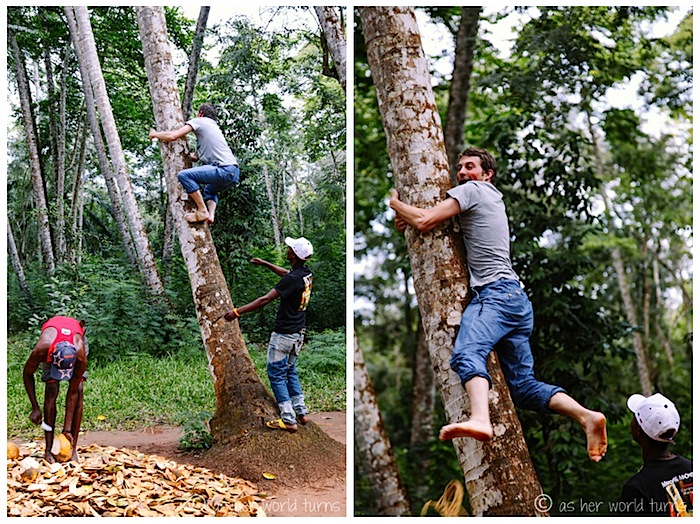
Next up, coconut time. Mr. Butterfly and his friends bring over freshly cut coconuts for us to sip and share.
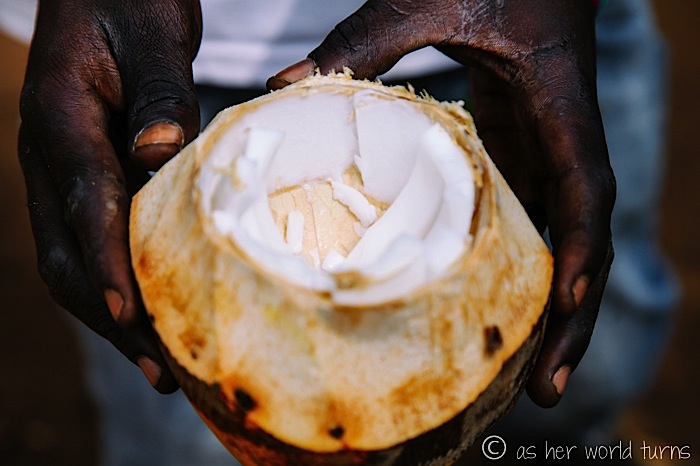
Klaus enjoys the refreshing beverage:
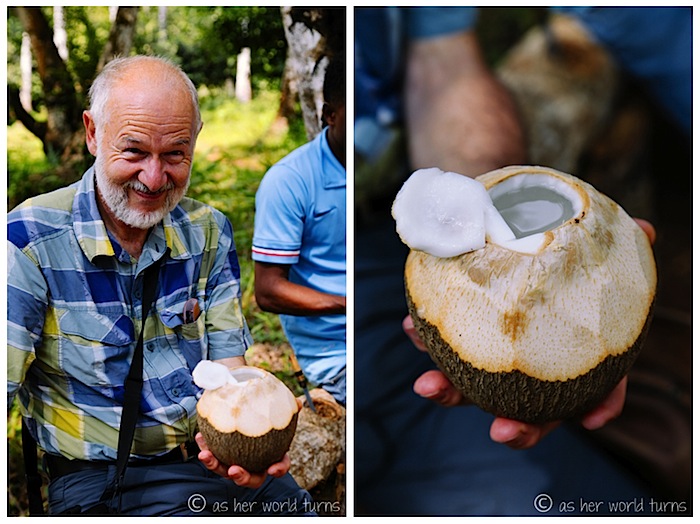
Dutch siblings Myrna and Jorien show off their palm necklaces. I show off an intricately woven hat and basket… maybe it’s a bottle holder? Or a purse?
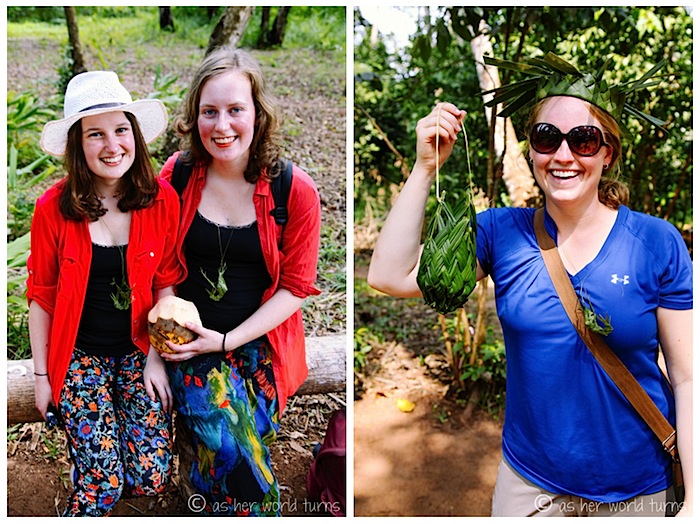
And a palm frog… these weavers are talented.
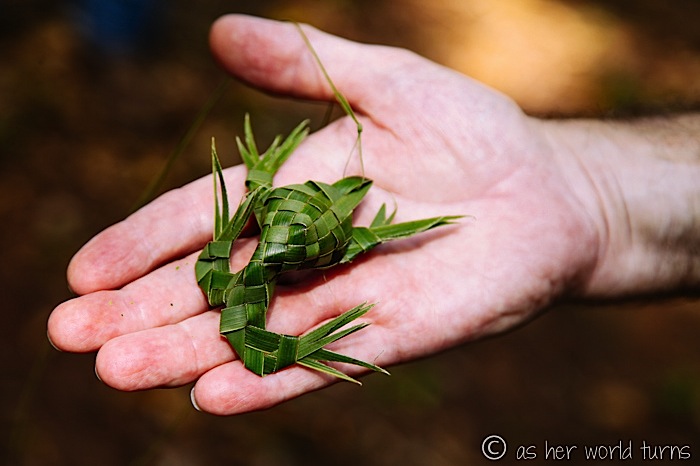
Our final part of the tour is a fruit bonanza. We get to taste all of these foods — some familiar, some I’ve never seen before… all delicious.
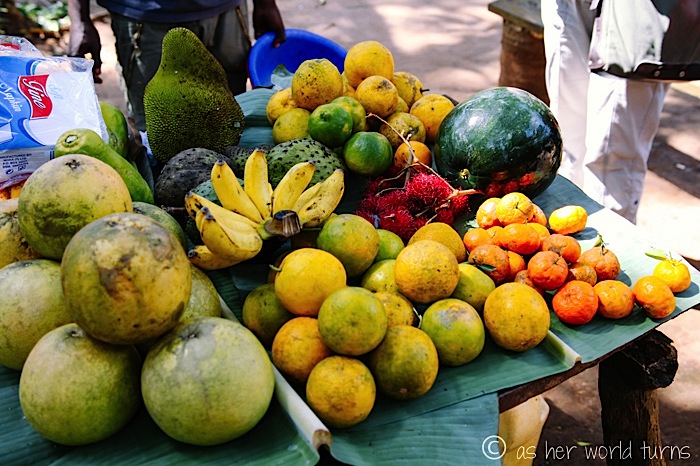
Our host for this particular tasting session is especially entertaining.

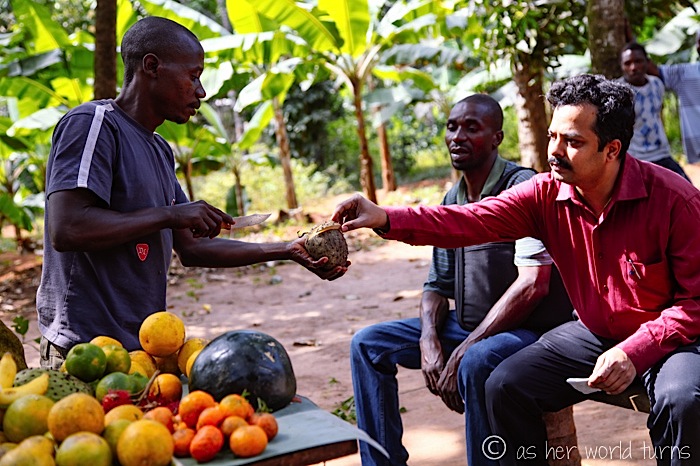
He shows off the cross-section of a jackfruit:
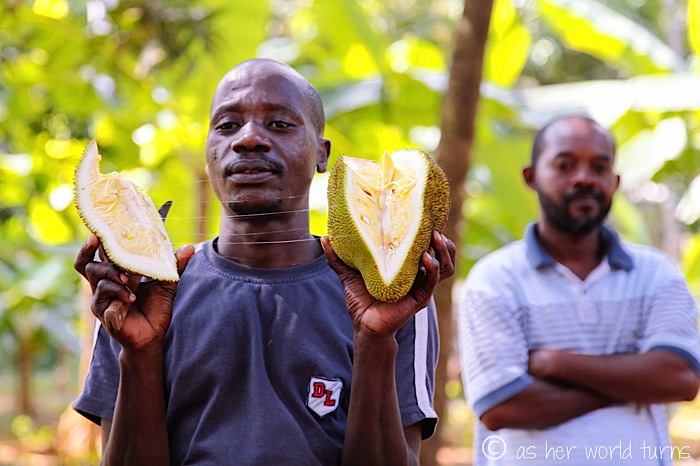
Here’s an array of the fruits we sample:
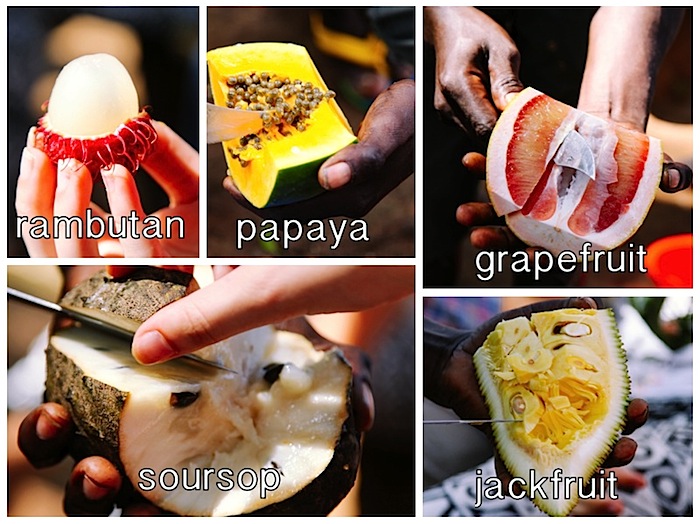
As for some of the ones you might be less familiar with…
Jackfruit tastes like a combination of a pineapple and banana, if you can imagine that. Very tasty.
Rambutan is like lychee. Sweet and succulent.
Soursop is my new favorite fruit — it’s also referred to as a custard apple, as it’s very sweet and tasty. Wikipedia describes it as “a combination of strawberry and pineapple, with sour citrus notes contrasting with an underlying creamy flavor reminiscent of coconut or banana.” It is known for cancer healing properties.

As you might imagine, there are lots of scented items for sale — soaps and perfumes and sprays that promise to repel bugs (and possibly tour mates).
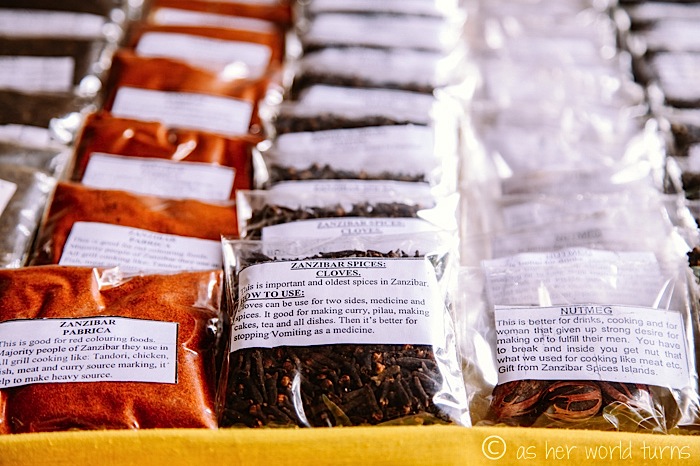
I’m temped to purchase some of these spices or coffee packets but I’m only halfway through my African travels at this point so it doesn’t make sense to pick up souvenirs. They all smell delicious, though. Have you ever heard of banana coffee?
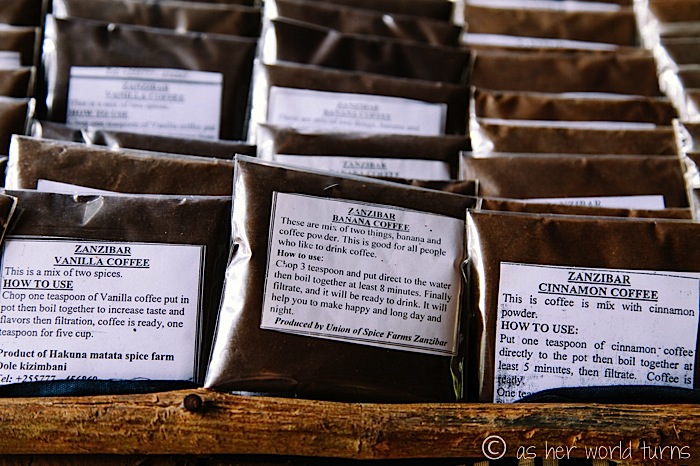
They sell these variety spice packs everywhere around Zanzibar, each one molded into some iconic shape from the area.

And that wraps up this very neat tour. Hope you enjoyed reading this post as much as I enjoyed putting it together.
FYI — just like the walking tour of Stone Town in Zanzibar, this Spice Tour is not included in our overland trip. Each tour costs an extra $15 USD and I think both of them are worth it, as they provide a deeper glimpse into this island’s history and culture.

